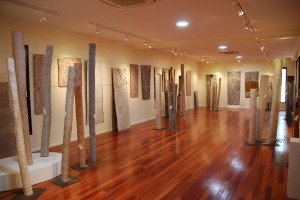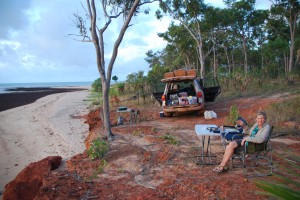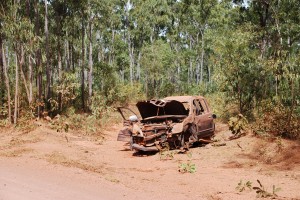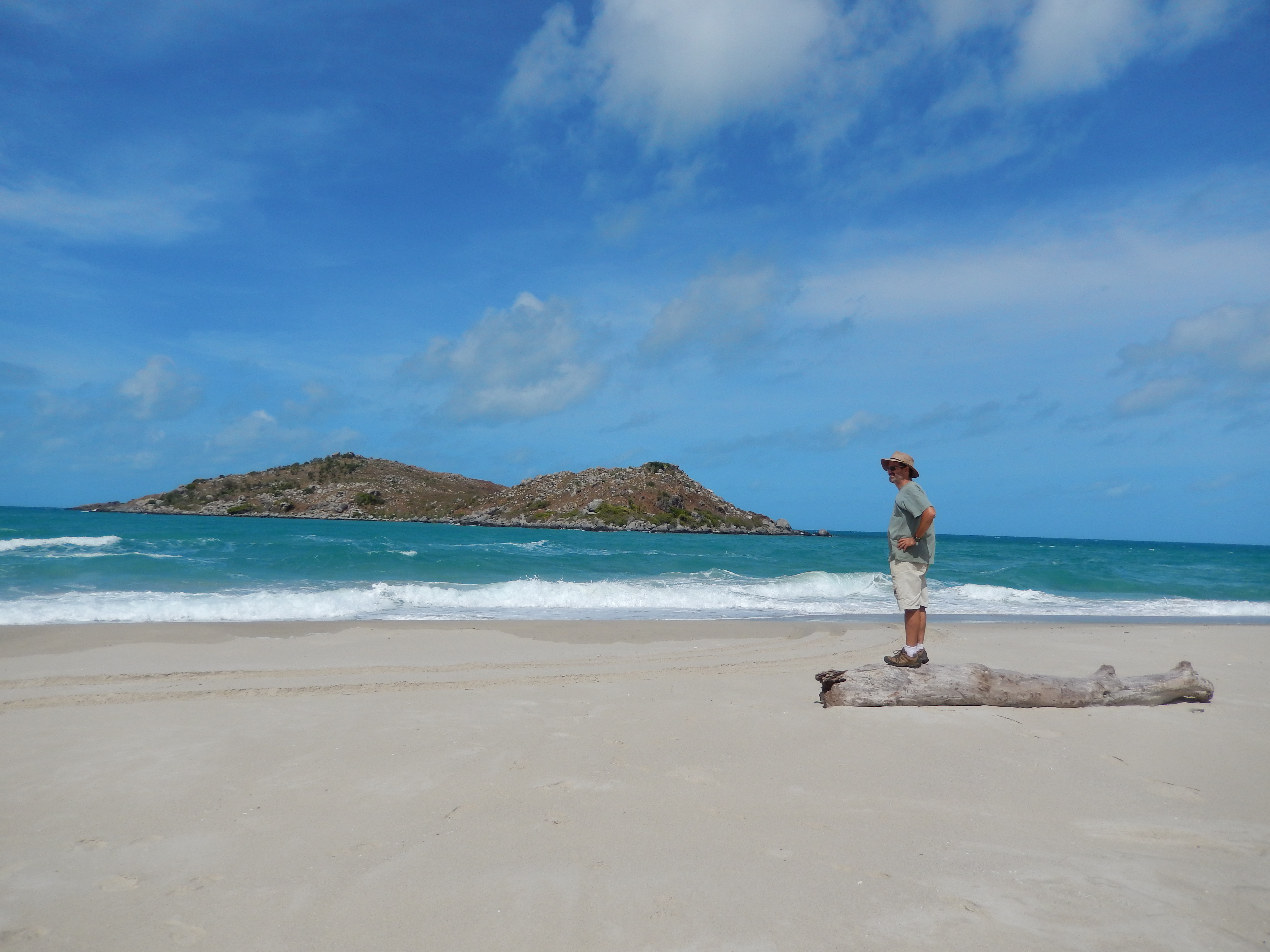It’s a rock not a croc
When venturing into the surf or rivers of the Northern Territory you always have to take heed of the many signs warning you of the possibility of crocodiles. Freshwater crocs, which are more prevalent in the rivers, are harmless and shy – they will usually swim away quickly if accidentally confronted. But saltwater crocs, which are also seen in fresh water, are a completely different story. They are aggressive and cunning hunters not to be tempted. So when you are swimming in these waters you need to be very wary. But we were frequently hot and dusty….and warily swam anyway.
As an outsider, visiting Arnhem Land is all about permits and what you are allowed – and not allowed – to do. On Monday of the week we were in Arnhem Land we had to apply for three more permits to complement our original entry permit. So we got a General Permit that allowed us to visit a number of local beaches and attractions and a special Cape Arnhem permit to visit the beaches and cape east of town.
Finally, we got an alcohol permit so we could buy, possess and consume alcohol. We had brought some grog with us – which is technically a violation of the rules without a permit – but gaining the permit made us all legal and allowed us to buy more. Phew! We knew getting four permits was always going to be a bit of a hassle filling in forms, paying money, getting letters from other authorities, but you do what you gotta do.

The Aboriginal Arts and Crafts Centre in Yirrkala had a spectacular collection of local art, some of which we couldn't resist
We spent the rest of the day exploring the various beaches, bays, inlets, peninsulas and other geographical attractions of the area, including the Gove Yacht Club on a beautiful grassy setting near the beach, and the huge bauxite mine at the end of the road. Then it was out to the Aboriginal community of Yirrkala, which was a bit scratchy and run down but on a beautiful headland with beach all around. At Yirrkala there is a renowned Aboriginal arts and crafts centre selling paintings and artwork from nearby artists. Some of this stuff was absolutely too good to refuse so when he said he could ship six items home we said SOLD!
We made our way down to nearby Rainbow Cliffs where we found a supreme camp site right on the orange-red bauxite cliff overlooking the seaand settled into a spectacular afternoon and evening without a soul anywherenear us. We chose not to swim at this spot and instead walked the beach and took in the stunning sunset. The only blight on this paradise was the midges (sand flies) which terrorised Julie a bit. We’ve had some magnificent camp sites so far but we rated this tranquil and beautiful one a perfect 10.

Our campsite at Rainbow Cliffs - at high tide around 2am the waves sounded like they were at our tyres
The next day we reluctantly left Rainbow Cliffs and headed to two of the inland attractions of the area. Following a very uneven four wheel drive track we found Latram River where we had a shaded waterhole with crystal clear running water all to ourselves. It was a perfect place to have a swim and wash off some of the sweat, red dust, sunscreen and bug spray that adorned us. So we checked out the water carefully, the mud banks, underwater roots and various other potential croc-looking items, then indulged ourselves in the beautiful clear water. Absolute bliss, I can tell you. We also followed the long and rough track into Goanna Lagoon for a look at where the non-indigenous locals bring their kids to camp on the weekend for swimming and relaxing. After one swim already in the day we decided to stay dry here.
In the afternoon we drove out to Cape Arnhem which dramatically sticks out into the Gulf of Carpentaria. This major landmark peninsula is made of rock and sand and proved to be a beautiful but very demanding four wheel drive experience. After letting down the
pressure in our tyres we battled the thick and soft sand up and over the dunes. It was all a bit edgy but also quite fun and the prize was seeing the long untouched beaches, rocky protruding headlands and wild surf in a place only a few people visit each month.
We ended up camping further up the coast at an amazing little place called Turtle Beach. We had this untouched beach to ourselves, not a soul within an hour’s drive. The track down to the beach was a bit prohibitive but the Cruiser thrives in these elements. The stunning red and pink sunset somehow managed to reflectively turn the wet sand from the receding tide on our private beach an unmistakable pink, a surreal experience.
We waded into the water to cool down and enjoy the shallow surf on our ankles but chose not to swim here either. It almost certainly would have been safe, but we were reminded of the risks when a very croc looking item lurking in the shallows turned out to be a rock instead. That was close!
That night around the fire we were visited by a number of bandicoots, another of Australia’s unique marsupials, who didn’t seem to mind our presence or that of the fire as they foraged for food within metres of us. The next morning we went down to the
beach and saw the unmistakable prints of a turtle which had climbed up the beach in the middle of the night, dug a hole high above the waterline to lay her eggs and then make her way back down into the water. An unbelievable privilege to see these tracks and imagine what was happening so near us, very special.
The next day we faced The Long Red Road and drove nearly 500 klms south to Mainoru Store where we had camped the first night on the drive north. This is a tough long drive requiring total concentration at all times to deal with the corrugations, huge holes, deep soft spots, dips, floodways, water crossings, loose rocks and gravel, just about every hazard that can be thrown up at you. The drive in and out of Arnhem Land makes you earn the experience and appreciate it even more. The following day we drove the last 250 klms out to the main road and civilisation again.

One of many abandoned wrecks on the side of the road - a constant reminder you are on Aboriginal land
I found this week travelling and staying as guests of the local Aboriginal clans to be fascinating and educational in addition to seeing some of the most beautiful country on this trip. What I didn’t see was indigenous people working in Nhulunbuy or integrated into the rest of the town. In fact from what I saw and heard from others it seems they are a peaceful and content people but their contribution to the land, commerce and society in general is quite minimal. They live in government built homes, have access to good schools and health services so life might be good. And I recognise they have the difficult task of straddling two worlds and perhaps are somewhat caught right between them. I wish them all the best.










